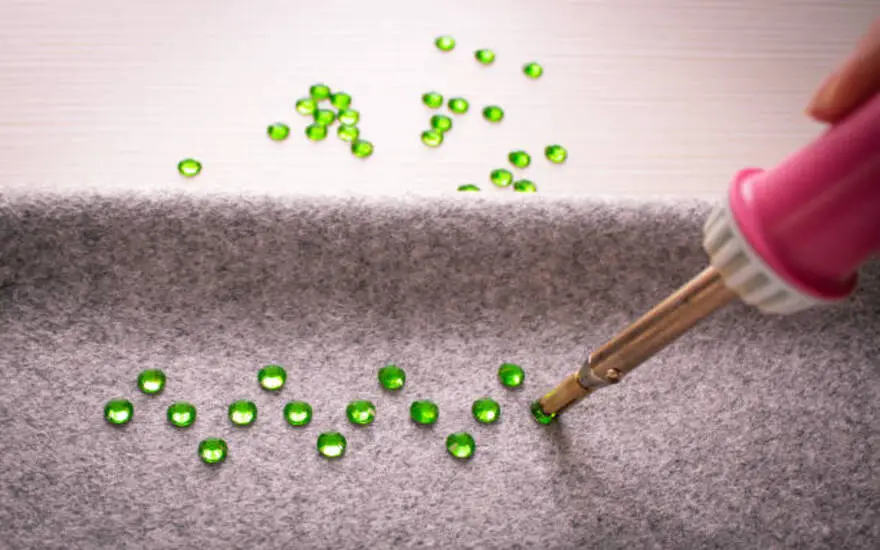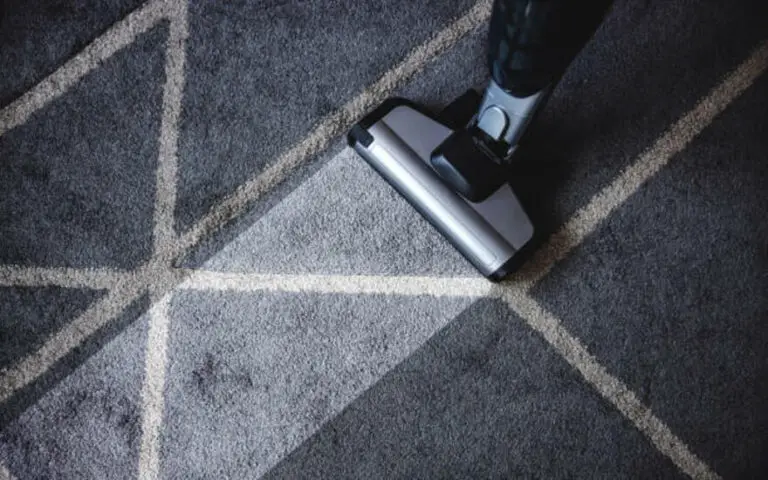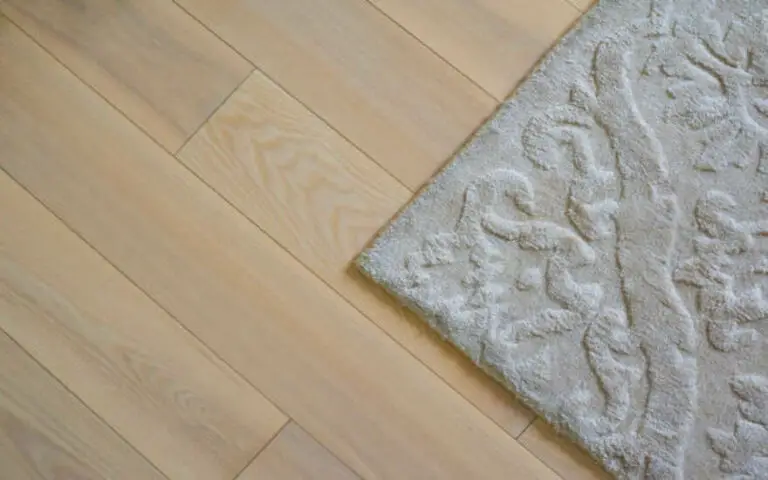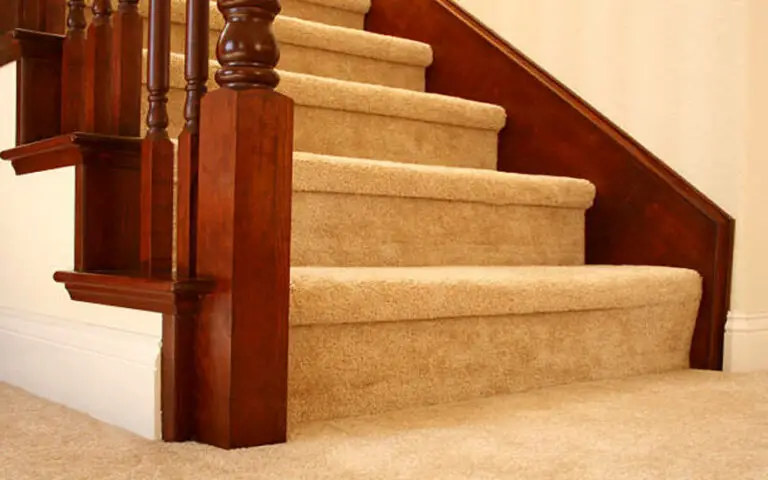Larvae can be a huge nuisance, but there are steps you can take to get rid of them quickly and effectively. In this blog post, I’ll discuss some of the best methods for removing maggots in carpets and keeping them away. Keep reading to find out more!

How to get rid of maggots in carpet: Step By Step
Removing larvae on the carpet is no easy task, but it can be done. The first step is to identify the source of the larvae. If you have spilled food on your carpet, remove it immediately to prevent an infestation. After removing food sources, you should then vacuum the carpet thoroughly.
Step 1: Identify the Source of Maggots
The first step in getting rid of maggots in your carpet is to identify the source of the larvae. It’s essential to find out where they are coming from so you can take the necessary steps to prevent them from returning.
Look for areas around your home where food and moisture are present, such as near pet food dishes, garbage cans, or leaky pipes. If you find maggots in a bin or container, clean it thoroughly and replace the lid, so other larvae don’t get inside. Once you have identified the source of the larvae, you can move on to the next step: removing food sources.
Step 2: Remove Food Sources
Once you’ve identified the source of the larvae, removing any food sources that could attract them is essential. Start by thoroughly vacuuming your carpets and rugs, paying particular attention to areas where food may have been spilled.
Remove the vacuum bag or canister immediately after cleaning, as larvae can still live inside. You should also clean up any pet food or spilled drinks in the area that could attract pests. Finally, if you have a pet, ensure their food bowl is always kept in a clean, pest-free room.
Taking these steps can help you get rid of any existing larvae and will also help prevent them from returning in the future.
Step 3: Vacuum the Carpet
Once you have identified the source of the larvae and removed food sources, the next step is to vacuum the carpet. Vacuuming will help get rid of any dead maggots and boric acid powder that is on the rug. Be sure to clean thoroughly, especially in crevices and cracks.
This will help ensure that all of the larvae are removed. You may need to go over the same area several times to provide all the larvae are removed. After vacuuming, properly dispose of the vacuum bag or canister to prevent re-infestation.
Step 4: Use an Insecticide
Once you have identified the source of the larvae and removed any food sources, it’s time to use an insecticide. Pyrid Aerosol is an effective insecticide for killing larvae in carpets. To use Pyrid Aerosol, attach the straw applicator tip to the Pyrid nozzle and apply to noted tight spaces and crevices.
You can also spray larger areas with Pyrid Aerosol without the straw applicator. Be sure to follow the instructions on the label before using any insecticides. After applying the insecticide, let it sit for at least an hour before vacuuming any remaining larvae.
Step 5: Use a Natural Remedy
In Step 5 of getting rid of maggots in your carpet, it is recommended to use a natural remedy. Vinegar is an excellent option because it is acidic enough to kill larvae on contact. To prepare the vinegar solution, mix three parts water to one part vinegar and pour the mixture directly over the affected area.
Additionally, dishwasher soap is a great way to kill grubs and larvae since it may contain borax, a natural insecticide similar to boric acid. With these natural remedies, you can get rid of any larvae in your carpet easily and quickly.
Step 6: Clean the Carpet with Soap and Water
Once you’ve vacuumed the carpet and used an insecticide, it’s time to clean the carpet with soap and water. This is essential in killing any remaining larvae and preventing reinfestation. Mix a solution of warm water and mild detergent in a bucket, then use a sponge or brush to scrub the carpets.
Make sure to focus on stained areas as these are likely where larvae live and breed. Once you’ve finished washing, rinse the carpet with warm water. After cleaning, it’s essential to ensure the rug is completely dry before moving on to the next step.
Step 7: Seal Crevices and Cracks
Once you have vacuumed the carpet and treated it with an insecticide, you can move on to sealing up any crevices or cracks in your carpet.
This will help to prevent any further infestations of maggots. Gaps and cracks in your carpets are places where larvae can hide and lay eggs, so by sealing them up; you can help to keep the pests at bay. You can use a caulking gun with a latex caulk to seal these areas for a more permanent solution.
The caulk will dry quickly and is resistant to water and rust, which helps to protect your carpets from further damage. Ensure that you get into all the hard-to-reach areas, such as between the floorboards or around furniture, as this will help ensure that no larvae can find their way in.
Step 8: Dry the Carpet Thoroughly
Once you have finished the previous steps, it is now time to dry the carpet thoroughly. This is an essential part of getting rid of maggots in your carpet. The best way to do this is by using a dehumidifier or fan to help circulate air and speed up drying.
It is also essential to ensure that all crevices, cracks, and seams are completely dry to prevent further infestations. Check the carpet and surrounding areas regularly, as larvae may still exist.
Step 9: Steam Clean the Carpet
Once you have removed the source of the maggots and vacuumed up any remaining larvae, it is time to steam clean the carpet. Steam cleaning uses heat and steam to kill larvae and the eggs that fly lay.
Not only can you kill any larvae you may have missed, but you can also remove the stain that is attracting flies. Make up equal parts white vinegar and water solution and spray directly onto your carpet before steaming it.
This will help kill any remaining larvae and remove the stain. After boiling, dispose of the water and vacuum any debris before letting your carpet dry completely. By steam cleaning your rug, you can ensure that all food sources have been eliminated, preventing future infestations.
Step 10: Monitor for Reinfestation
Once you’ve taken all the steps outlined above, monitoring your carpets for any signs of re-infestation is essential. Make sure to examine the carpets every few days, paying particular attention to any dark or wet spots that may indicate the presence of larvae. If you find any new larvae or adults, repeat the above steps and consider using a more potent insecticide.
Additionally, it’s important to stay vigilant when preventing future infestations. Keep food sources stored away and in airtight containers, vacuum your carpets regularly, and use natural remedies if possible. With a little effort and patience, you can keep your carpets maggot-free!
What are grubs?
Grubs are tiny, worm-like larvae that feed on decaying organic matter, such as food waste, pet feces, and dead animals.
They can quickly multiply and find their way into your home, often via the carpet. It’s essential to understand what maggots are and how they operate so you can take the necessary steps to prevent them from entering your home in the first place.
Identifying the source of the larvae and removing food sources, such as pet feces or dead animals, is the best way to prevent an infestation. If you already have an infestation, vacuuming the carpet regularly, using an insecticide, and cleaning with soap and water is an excellent ways to eliminate them.
Additionally, you can use a natural remedy such as vinegar or boric acid powder to remove larvae in your carpet. Finally, sealing crevices and cracks in your home can help prevent future infestations.
How do you get rid of maggots in the carpet?
Removing larvae from the carpet can seem daunting, but it doesn’t have to be. The first step is to identify the source of the larvae and remove any food sources that may have attracted them.
Then, you can use a vacuum to remove as many larvae as possible from the carpet. If that isn’t enough, you can use an insecticide to remove the remaining larvae. If you’d prefer a more natural approach, you can sprinkle boric acid or diatomaceous earth on your carpet or make a vinegar solution to help eliminate the larvae.
Finally, clean your carpet with soap and water, dry it thoroughly, and steam clean it to ensure all the larvae are gone. With these measures in place, you should be able to eliminate your maggot problem in no time.
What can be done to prevent maggots in the future?
To prevent maggots in the future, a few things can be done. First, it’s keeping your home clean and free of food sources that attract flies is essential. Make sure to clean up any spills or messes quickly and adequately.
Stealing any cracks or crevices in walls or floors is necessary, which can be potential entry points for flies. You can also use strong vinegar or boiling water to kill larvae you see in your home. Lastly, consider using an insecticide with a spray bottle if you have a severe infestation. With these steps, you help keep your home free from larvae and prevent them from returning.
Summary
In summary, on your carpet can be a daunting task. However, you can effectively remove larvae from your carpets with a few simple steps and diligence. Start by identifying the source of the larvae, then remove any food sources they may have been attracted to.
Vacuum the carpets to remove as many larvae as possible, then use an insecticide or natural remedy to finish the job. Clean the carpet with soap and water, seal any crevices and cracks, and dry the carpet thoroughly. Finally, steam clean the carpet to eliminate all remaining larvae. With these steps completed, you should be able to get rid of all of the larvae in your carpets and prevent any future infestations.



![What Are The Grades of Carpet Padding?[Must Read] 4 What Are The Grades of Carpet Padding?[Must Read]](https://homequeries.com/wp-content/uploads/2022/03/What-Are-The-Grades-of-Carpet-Padding-768x480.jpg)


